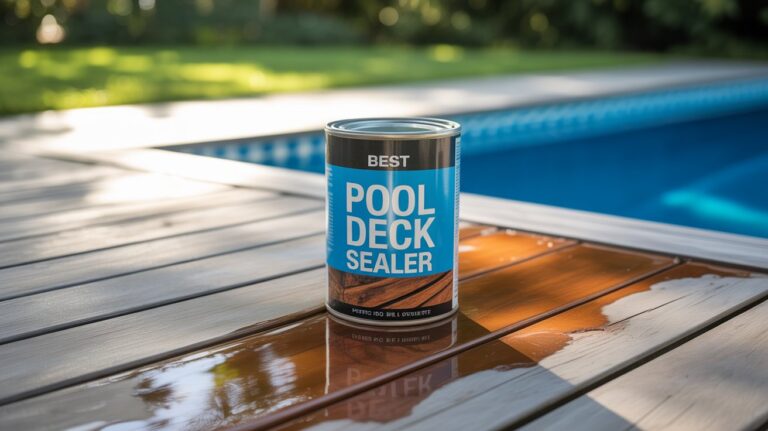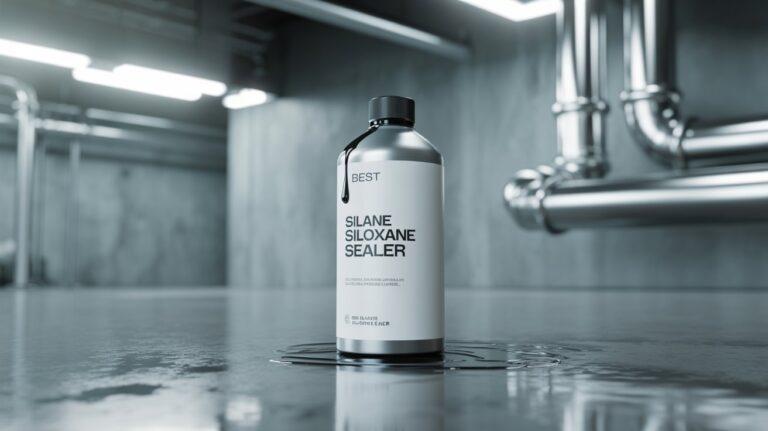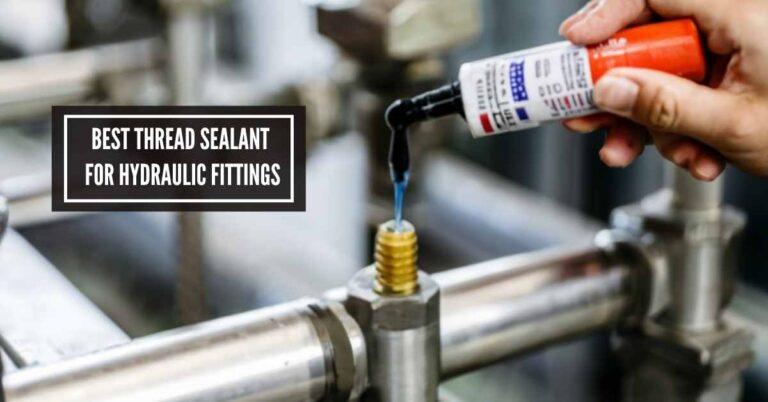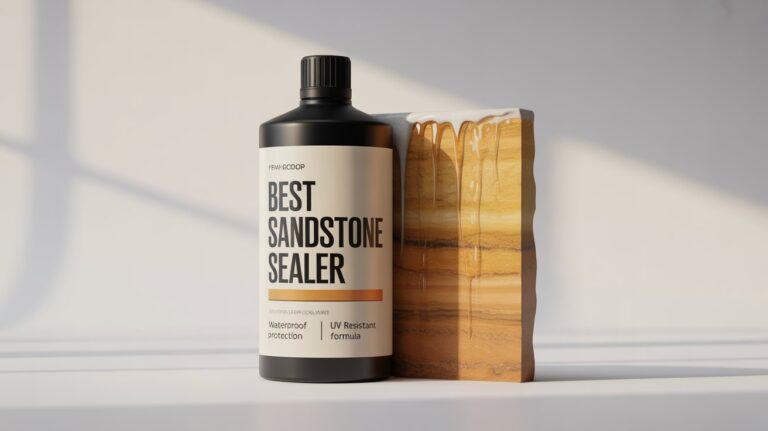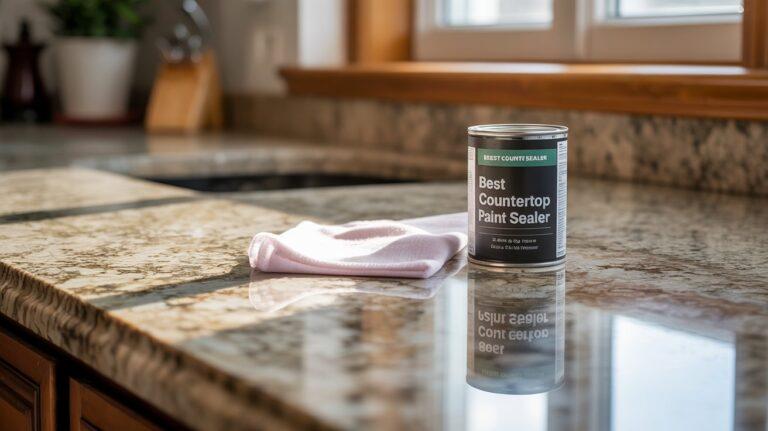Best Joint Stabilizing Paver Sealer: Ultimate Protection!
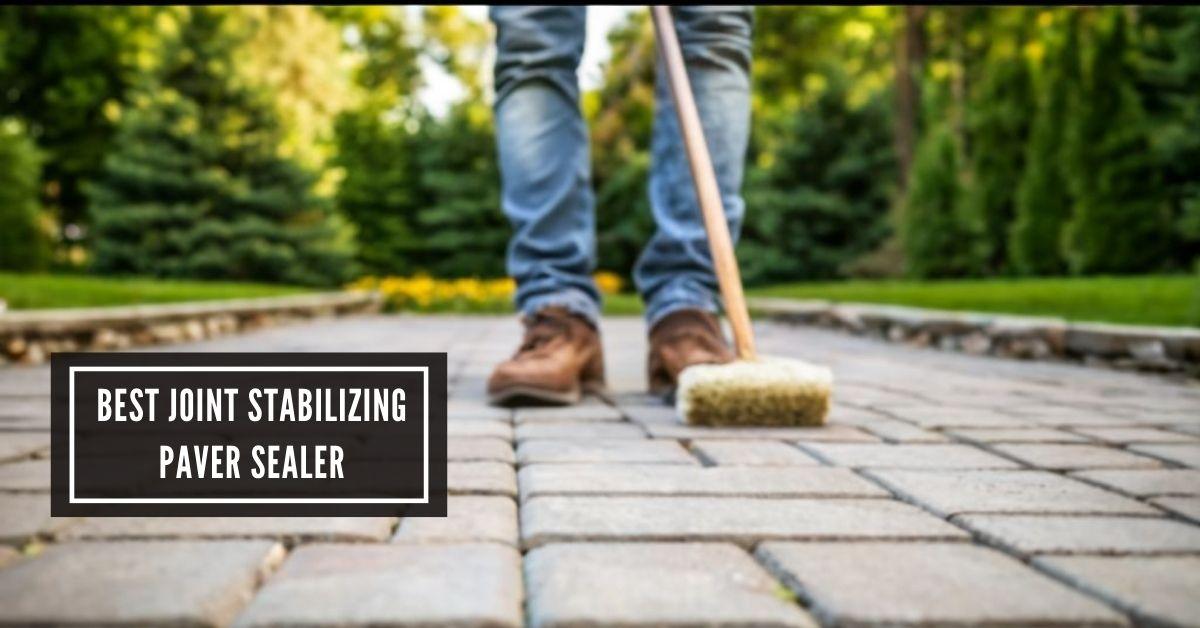
The best joint stabilizing paver sealer is one that effectively consolidates joint sand while offering robust protection against the elements. A top-rated option is the DOMINATOR SG+ High Gloss Paver Sealer, known for its durability and ease of application.
Joint stabilizing sealers are essential for maintaining the structural integrity and appearance of paved surfaces. These advanced sealant products provide a dual function; they lock in paver sand and form a protective barrier against water, stains, and UV damage. Choosing the right sealer ensures a long-lasting finish that enhances the pavers’ color, resists weed growth, and prevents insect infestation.
Homeowners and professionals alike seek sealers that are eco-friendly and don’t require frequent reapplications. A superior paver sealer transforms outdoor spaces, providing peace of mind and preserving the pavement’s aesthetic appeal through the seasons.
Expert Tips on Choosing the Right Paver
A paver sealer is a must-have for maintaining the integrity and beauty of your patio, walkway, or driveway. These special sealers provide a protective layer. They shield against weather, spills, and wear and tear. Not only do they enhance the color and sheen of your pavers, but they also offer critical joint stabilization. This ensures your pathways stay put, just as perfectly laid as day one. Let’s unravel the benefits of paver sealers and understand why joint stabilization plays a pivotal role.
Understanding Paver Sealers
Paver sealers are your first line of defense for outdoor surfaces. They come in multiple types:
- Acrylic-based sealers: Create a glossy finish and prevent water absorption.
- Water-based sealers: Offer an eco-friendly option with easier cleanup.
- Solvent-based sealers: Known for deep penetration and durability.
Joint stabilization is a key feature of high-quality sealers. It prevents the sand between pavers from washing away. Good sealers also fight against weed growth and insect infestation.
The Importance Of Joint Stabilization In Paver Protection
Joint stabilization is vital for long-lasting paver installation. Here’s why it matters:
| Benefit | Description |
|---|---|
| Prevents Erosion | Sealers lock the sand in place, keeping it from eroding. |
| Blocks Weeds and Pests | Sealed joints deter unwanted plant and insect invasions. |
| Enhances Durability | The pavers resist shifting, leading to a longer lifespan. |
| Reduces Maintenance | Stabilized joints minimize the need for repairs and upkeep. |
Choosing a sealer with joint stabilizing properties preserves your hardscape’s aesthetic and structural quality. It’s an investment in the longevity of your outdoor spaces.
Types Of Paver Sealers And Their Properties
Selecting the right paver sealer is vital for maintaining the beauty and longevity of your paver installations. Understanding the different types and their specific properties can save you both time and money. Take a closer look at each type to make the best choice for your project.
Film-forming Vs. Non-film-forming Sealers
Film-forming sealers create a protective layer on paver surfaces. This barrier helps to preserve color and prevent stains. In contrast, non-film-forming sealers penetrate the pavers. They offer protection without altering the surface appearance. Both have their distinct advantages:
- Film-forming sealers: Enhance color, add gloss, protect against spills.
- Non-film-forming sealers: Maintain natural look, enable paver breathability, limit surface wear.
Water-based Vs. Solvent-based Sealers
The choice between water-based and solvent-based sealers depends on desired finish, safety, and environmental concerns. Consider these factors:
| Water-Based Sealers | Solvent-Based Sealers |
| Lower VOCs, safer for indoor use | Higher VOCs, strong odor |
| Faster drying time | Longer-lasting finish |
| Easier cleanup with water | Requires mineral spirits for cleanup |
Acrylic, Polyurethane, And Epoxy Sealers
Acrylic, polyurethane, and epoxy sealers offer differing protections:
- Acrylic Sealers: Good for high-traffic areas, quick drying, UV resistant.
- Polyurethane Sealers: Ideal for preventing scratches, add durability, enhance colors.
- Epoxy Sealers: Best for industrial use, highly durable, resist chemicals.
Each sealer has unique attributes to suit specific conditions and preferences.
Factors To Consider When Choosing A Joint Stabilizing Paver Sealer
When it’s time to protect and maintain your pavers, a joint stabilizing paver sealer is essential. Sealer guards against stains, erosion, weed growth, and insect infestation. But you can’t pick just any sealer. You need one that fits your specific needs. Let’s look at key factors guiding your choice towards the ideal joint stabilizing paver sealer.
Climate And Environmental Conditions
Climate plays a big role in sealer performance. Here are some points to ponder:
- Temperature fluctuation: Some sealers crack in freezing temps while others can’t handle the heat.
- Rainfall levels: Wet climates need waterproof options to prevent washout.
- Sun exposure: UV-resistant sealers prevent fading and keep your pavers looking fresh.
Type Of Pavers And Installation Area
The paver type and area affect the sealer choice:
| Type of Paver | Installation Area Usage | Suitable Sealer Feature |
|---|---|---|
| Natural stone | High foot traffic | Durable sealer with a non-slip finish |
| Concrete | Driveways | Oil-resistant and stain-repellent properties |
| Brick | Patios | Sealer offering color enhancement |
Desired Aesthetic Finish And Maintenance Commitment
Think about the finish and upkeeping:
- Matte, gloss, or wet look: Sealers come in different sheens. Choose one that complements your home’s style.
- Cleaning frequency: Some sealers require more frequent cleaning. Assess your commitment level.
- Reapplication period: Long-lasting sealers save time but might cost more upfront.
Top-rated Joint Stabilizing Paver Sealers On The Market
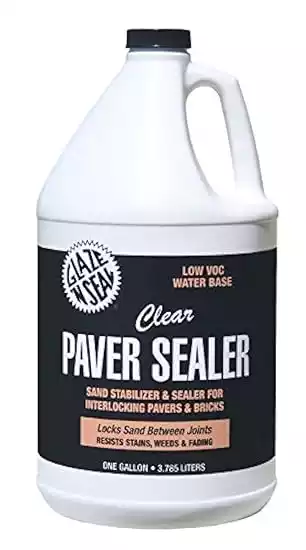
Sealing pavers is vital for maintaining a vibrant, stable surface. Joint stabilizing paver sealers go a step further. They not only protect the surface but also solidify the joint sand. This prevents weed growth and insect infestation. Let’s dive into some of the market’s top-rated sealers to help you pick the right one for your paving project.
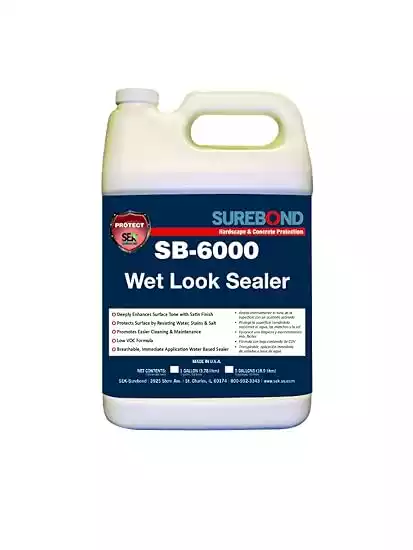
Reviews Of Popular Brands And Products
- Glaze ‘N Seal – 153 Clear Paver Sealer: Offers a natural finish and solidifies sand to prevent erosion.
- SEK Surebond SB-6000: Enhances color and provides good sand bonding.
- Eagle Sealer EPS1: Known for its wet look that highlights the paver’s color.
Pros And Cons Of Each Option
| Product | Pros | Cons |
|---|---|---|
| Glaze ‘N Seal – 153 | Eco-friendly; prevents erosion paver sand sealer | Less glossy finish if preferred |
| SEK Surebond SB-6000 | Enhances natural color; strong bonding | May require professional application |
| Eagle Sealer EPS1 | High-gloss finish; UV resistant | Can be slippery when wet |
Pricing And Warranty Information
- Glaze ‘N Seal – 153 Clear Paver Sealer: Costs around $40-$50 per gallon. Offers a satisfaction guarantee.
- SEK Surebond SB-6000: Priced at roughly $60-$70 per gallon. Comes with a limited warranty.
- Eagle Sealer EPS1: Usually $100 or more per 5 gallons. Includes a limited warranty.
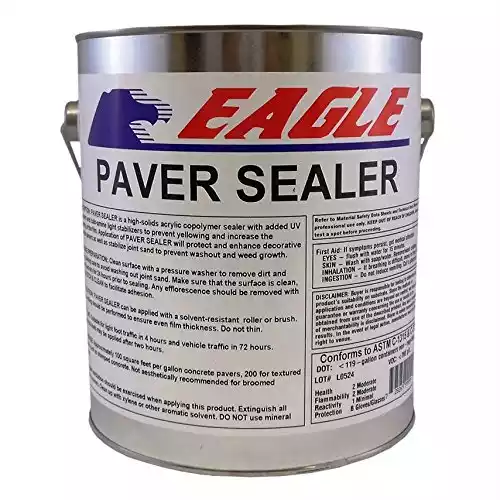
Application Techniques For Optimal Joint Stabilization
Securing the joints in paving projects is crucial for long-lasting beauty and functionality. For those ready to tackle this part of their DIY or professional landscaping project, understanding the proper application techniques for optimal joint stabilization is essential. With the right joint stabilizing paver sealer, pavers can withstand the elements and continue to look great for years. Here’s a step-by-step guide to ensure effective application and enduring results.
Preparing The Pavers For Sealing
Start with a clean slate. Remove debris, dirt, and weeds from between the pavers. Next, clean the pavers. Use a power washer with appropriate strength – not too harsh to damage the pavers but enough to clean thoroughly. Allow the pavers to dry completely, which may take 24 to 48 hours, depending on the climate.
Best Practices For Applying Sealer
- Choose a dry day with no rain forecast for at least 24 hours.
- Use the right tools. A sprayer gives even coverage, while a roller can help press the sealer into the joints.
- Apply the sealer systematically, working on small sections at a time.
- Maintain a wet edge to avoid overlapping marks for a consistent finish.
- Apply two thin coats rather than one thick coat for better absorption and bonding.
Curing Time And Post-application Care
Cure time is vital for sealer performance. Typically, it takes 24 hours for the sealer to dry to the touch, but a full cure may take up to 48 hours. During this time, keep vehicles and heavy foot traffic off the pavers. After curing, routine maintenance includes sweeping and occasional rinsing to maintain the beauty and integrity of the sealant. Treat stains promptly to prevent them from setting into the sealed surface.
Common Issues And Troubleshooting Joint Stabilizing Paver Sealer
Joint stabilizing paver sealer plays a crucial role in achieving a durable, aesthetically pleasing surface. Misapplication or environmental factors can lead to issues. Efficient troubleshooting ensures long-lasting beauty and stability for paver installations. Let’s explore common setbacks and their solutions.
Potential Problems And How To Avoid Them
Premature sealer wear and discoloration often stem from improper application or environmental factors. Adherence to product instructions is essential. Here are key points to circumvent potential issues:
- Surface preparation: Ensure complete cleanliness and dryness before application.
- Weather conditions: Apply in mild weather to avoid quick drying or water trapping.
- Product choice: Select sealers suitable for specific paver materials and usage.
Repairing Sealer Failures And Maintenance Tips
Encountering sealer peeling or hazing? Restoration starts with identifying the cause.
- Assess: Examine the extent of failure.
- Remove: Use a sealer stripper to clear affected areas.
- Reapply: Apply a new sealer coat carefully.
Maintain your paved areas with regular cleaning and periodic inspection for any signs of wear.
Expert Advice On Sealer Longevity And Reapplication
| Factor | Expert Tip |
|---|---|
| Longevity | Quality sealers, when correctly applied, last 2-3 years. |
| Reapplication | Reapply when wear is visible or after the recommended period. |
Routinely assess the paver surfaces and follow professional guidelines for reapplication schedules.
Enhancing And Protecting Your Pavers Long-term
Paver patios and driveways are substantial investments. Protecting these surfaces ensures their longevity and maintains their appearance. This is where a joint stabilizing sealer steps in. Let’s walk through the benefits and recommend practices to keep your pavers in top shape.
The Benefits Of Using A Quality Joint Stabilizing Sealer
A joint stabilizing sealer serves a dual purpose. It keeps the paver surface looking pristine and stabilizes sand joints to prevent weed growth and sand loss.
- Locks in Paver Sand: Reduces maintenance needs.
- Weed and Ant Deterrent: Blocks growth and deters ants.
- Enhances Color: Makes pavers look vibrant.
- Protects From Stains: Simplifies cleaning and maintenance.
- Resists Weather: Combats weather effects excellently.
Final Recommendations And Best Practices
Choosing the right sealer is pivotal. It maintains paver integrity and stabilizes the joint sand effectively. Here’s what to consider:
- Paver Type: Select a sealer compatible with your pavers.
- Finish Preference: Decide between matte or gloss finish.
- Weather Conditions: Consider your local climate.
- Application Method: Follow manufacturer’s instructions.
Regular maintenance ensures the sealer performs as expected.
Further Resources And Professional Assistance Options
Uncertain about DIY? Seek professional help. Many companies specialize in paver sealing. They can provide tailored advice and services.
For those who prefer hands-on work, numerous online tutorials and guides exist. They detail the sealing process step-by-step.
Frequently Asked Questions For Best Joint Stabilizing Paver Sealer
Is Joint Stabilizing Sealer Better Than Polymeric Sand?
Joint stabilizing sealer and polymeric sand serve different purposes. A sealer enhances paver color and protects against stains, while polymeric sand prevents weed growth and ant hills between pavers. The better option depends on the specific needs of your paving project.
What Is The Best Joint Filler For Pavers?
Polymeric sand is the best joint filler for pavers, providing a durable bond and resisting weed growth and insects.
What Is The Best Penetrating Sealer For Pavers?
The best penetrating sealer for pavers is the Siloxa-Tek 8500, known for its longevity and effectiveness in protecting against stains and deterioration.
How Do You Seal Paver Joints?
Clean the paver surface and joints thoroughly. Spread polymeric sand over the area, sweeping it into the paver joints. Tamp the pavers to settle the sand. Remove excess sand from the surface. Mist the pavement lightly with water to activate the polymeric sand and seal the joints.
What Is Paver Sealer?
Paver sealer is a protective coating applied to paving stones, offering stability and protection against elements like moisture and stains.
Conclusion
Choosing the right joint stabilizing paver sealer can elevate your outdoor space. Quality and durability are key to long-lasting results. We’ve explored top options that offer the best protection and aesthetic enhancement. For a pathway or patio that endures time and weather, invest in a superior sealer.
Your pavers deserve nothing less.

I am Robert Sandin, a professional sealing expert with a diverse range of expertise. From concrete to various other materials, I possess in-depth knowledge and experience in the art of sealing. On my website, I offer valuable tips and expert recommendations on sealing techniques and products for different materials. Whether it’s concrete, wood, metal, or more, I am committed to providing you with the guidance you need for successful sealing projects.

